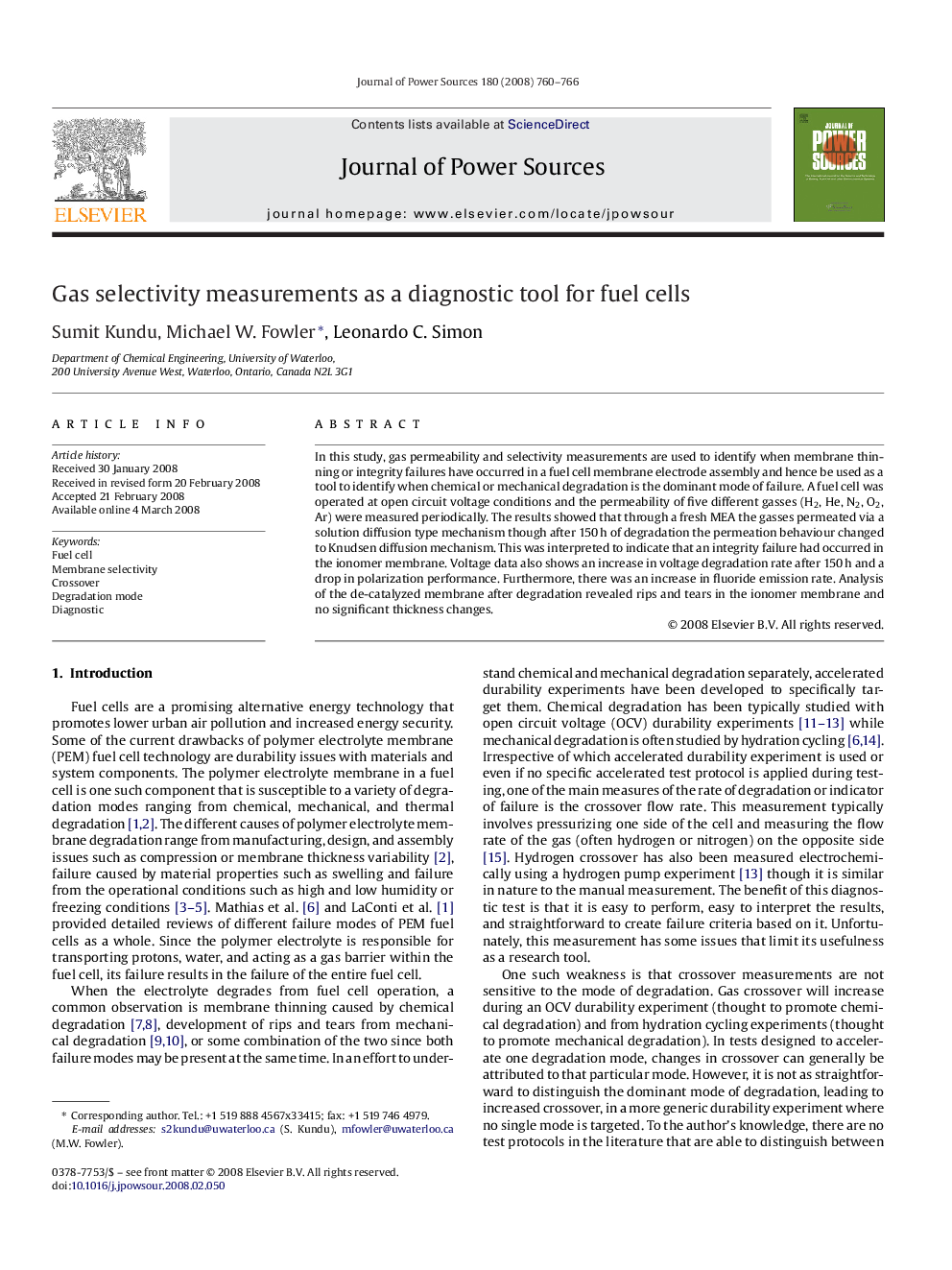| Article ID | Journal | Published Year | Pages | File Type |
|---|---|---|---|---|
| 1290462 | Journal of Power Sources | 2008 | 7 Pages |
In this study, gas permeability and selectivity measurements are used to identify when membrane thinning or integrity failures have occurred in a fuel cell membrane electrode assembly and hence be used as a tool to identify when chemical or mechanical degradation is the dominant mode of failure. A fuel cell was operated at open circuit voltage conditions and the permeability of five different gasses (H2, He, N2, O2, Ar) were measured periodically. The results showed that through a fresh MEA the gasses permeated via a solution diffusion type mechanism though after 150 h of degradation the permeation behaviour changed to Knudsen diffusion mechanism. This was interpreted to indicate that an integrity failure had occurred in the ionomer membrane. Voltage data also shows an increase in voltage degradation rate after 150 h and a drop in polarization performance. Furthermore, there was an increase in fluoride emission rate. Analysis of the de-catalyzed membrane after degradation revealed rips and tears in the ionomer membrane and no significant thickness changes.
